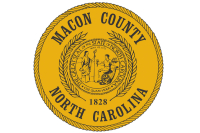A voice heard in the distance
Rural residents know the yellow-billed cuckoo as the “rain crow” or “storm crow” because its guttural “ka-ka-kow-kow-kowlp-kowlp-kowlp” seems to be sounded just prior to a late evening thunderstorm. (The distinctive “kowlp-kowlp-kowlp” portion of the call sounds something like a small dog barking.) The cuckoos on our property often sound a single “kowlp” note rather than the full vocalization.
Most scientific observers have dismissed the association of yellow-billed cuckoos and imminent rainfall, but the authors of Birds of the Carolinas (UNC Press, 1980) do note: “There may be some basis for this bit of folklore, because cuckoos apparently adjust the timing of their nesting effort to the temporary local abundance of suitable prey, which in many instances coincides with periods of rainfall.”
Or it might be that since they tend to call more on hot humid days, the rain crows are most often heard when rainfall would occur anyway. In this regard, ornithologist and artist George Miksch Sutton observed that the bird doesn’t call only when it’s about to rain or is raining. His theory was that when a summer storm is imminent people become apprehensive and pay closer attention to sounds; thereby, they tend to hear cuckoos calling at a certain time and associate the bird with specific weather conditions.
A second cuckoo species that nests here in the mountains, mostly in the upper elevations, is called the black-billed cuckoo because it lacks the yellow lower mandible of its cousin. I’ve never seen a black-billed cuckoo, but I have heard its rythmic “cu-cu-cu cu-cu-cu cu-cu-cu” calls on several occasions, most notably in the region of Blue Valley near Highlands, the Rainbow Springs section of the Nantahala River, and on the Balsam Mountain spur road of the Blue Ridge Parkway above Cherokee.
Both species winter in South America. They arrive in our region during the last week in April and usually depart by late October.
If you see a yellow-billed cuckoo in flight, the most distinctive feature will be a double row of large white spots beneath the tail. The reddish flash of wing against the brownish body is also diagnostic. The sight of the bird in flight or perched on a limb staring at you is one that’s worth pursuing. As Henry David Thoreau observed, “The cuckoo is a very neat, slender, and graceful bird. It belongs to the nobility of birds. It is elegant.”
Related Items
There are certain sounds that haunt the southern highlands. Wind sighing in the spruce-fir. The ongoing ever-changing yet eternally-the-same murmurs of a creek. A little less than a century ago one could still hear from time to time the blood curdling howls and screams of timber wolves and panthers. And then there are the resonate “kowlps” of the yellow-billed cuckoo. No bird is more secretive. Seldom leaving the shrouding foliage, the cuckoo sits motionless. When it does move, it creeps about with furtive restraint. Seeing one is possible but unlikely. For the most part, this is a bird that you hear … a “voice” in the distance. In my experience, it is a “voice” heard just before raindrops begin to patter softly on the tin roof of my house.
George Ellison wrote the biographical introductions for the reissues of two Appalachian classics: Horace Kephart’s Our Southern Highlanders and James Mooney’s History, Myths, and Sacred Formulas of the Cherokees. In June 2005, a selection of his Back Then columns was published by The History Press in Charleston as Mountain Passages: Natural and Cultural History of Western North Carolina and the Great Smoky Mountains. Readers can contact him at P.O. Box 1262, Bryson City, N.C., 28713, or at This email address is being protected from spambots. You need JavaScript enabled to view it..









